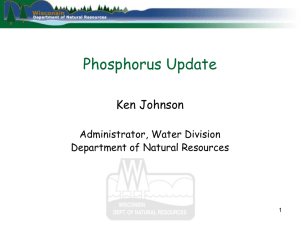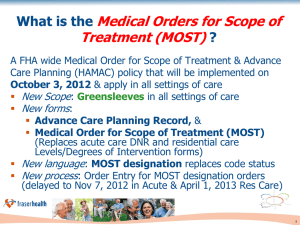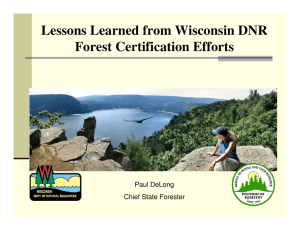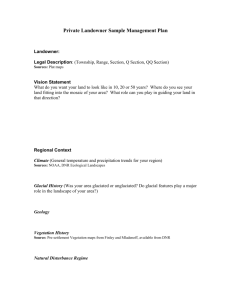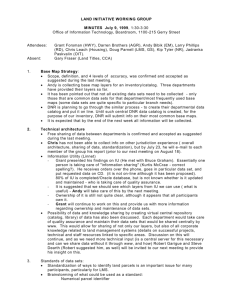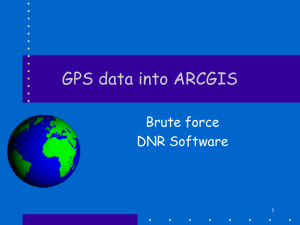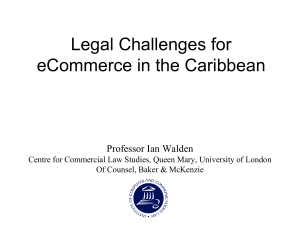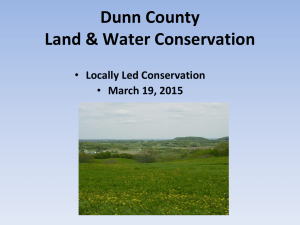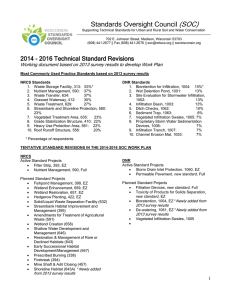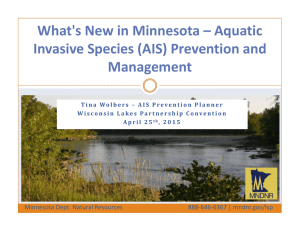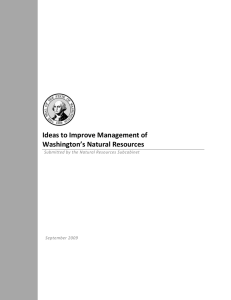Understanding Environmental Policy Constraints in the Red Cedar Watershed
advertisement
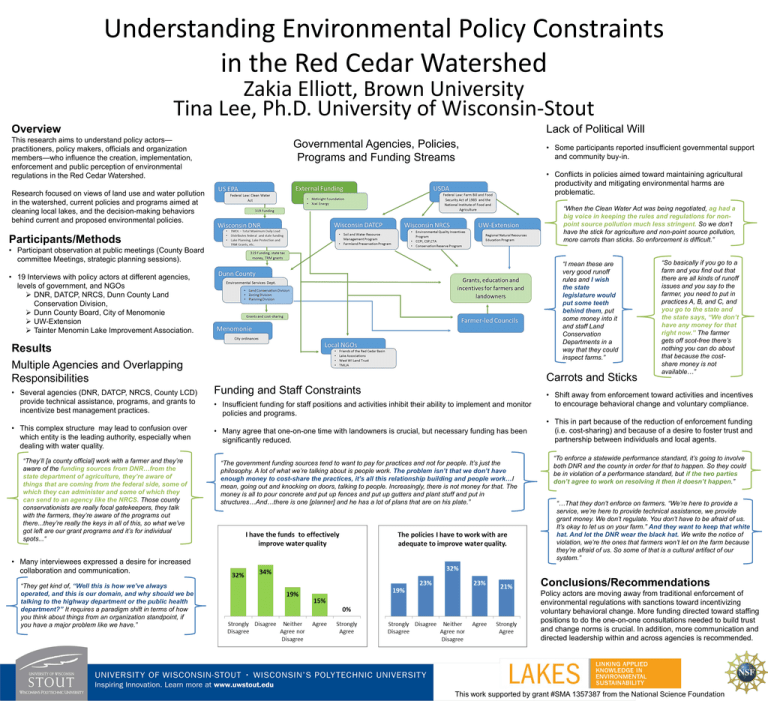
Understanding Environmental Policy Constraints in the Red Cedar Watershed Zakia Elliott, Brown University Tina Lee, Ph.D. University of Wisconsin-Stout Lack of Political Will Overview This research aims to understand policy actors— practitioners, policy makers, officials and organization members—who influence the creation, implementation, enforcement and public perception of environmental regulations in the Red Cedar Watershed. Governmental Agencies, Policies, Programs and Funding Streams • Conflicts in policies aimed toward maintaining agricultural productivity and mitigating environmental harms are problematic. Research focused on views of land use and water pollution in the watershed, current policies and programs aimed at cleaning local lakes, and the decision-making behaviors behind current and proposed environmental policies. “When the Clean Water Act was being negotiated, ag had a big voice in keeping the rules and regulations for nonpoint source pollution much less stringent. So we don’t have the stick for agriculture and non-point source pollution, more carrots than sticks. So enforcement is difficult.” Participants/Methods • Participant observation at public meetings (County Board committee Meetings, strategic planning sessions). “I mean these are very good runoff rules and I wish the state legislature would put some teeth behind them, put some money into it and staff Land Conservation Departments in a way that they could inspect farms.” • 19 Interviews with policy actors at different agencies, levels of government, and NGOs DNR, DATCP, NRCS, Dunn County Land Conservation Division, Dunn County Board, City of Menomonie UW-Extension Tainter Menomin Lake Improvement Association. Results Multiple Agencies and Overlapping Responsibilities • Several agencies (DNR, DATCP, NRCS, County LCD) provide technical assistance, programs, and grants to incentivize best management practices. • This complex structure may lead to confusion over which entity is the leading authority, especially when dealing with water quality. “They’ll [a county official] work with a farmer and they’re aware of the funding sources from DNR…from the state department of agriculture, they’re aware of things that are coming from the federal side, some of which they can administer and some of which they can send to an agency like the NRCS. Those county conservationists are really focal gatekeepers, they talk with the farmers, they’re aware of the programs out there...they’re really the keys in all of this, so what we’ve got left are our grant programs and it’s for individual spots...“ • Many interviewees expressed a desire for increased collaboration and communication. “They get kind of, “Well this is how we’ve always operated, and this is our domain, and why should we be talking to the highway department or the public health department?” It requires a paradigm shift in terms of how you think about things from an organization standpoint, if you have a major problem like we have.” • Some participants reported insufficient governmental support and community buy-in. Funding and Staff Constraints • Insufficient funding for staff positions and activities inhibit their ability to implement and monitor policies and programs. • Many agree that one-on-one time with landowners is crucial, but necessary funding has been significantly reduced. “The government funding sources tend to want to pay for practices and not for people. It’s just the philosophy. A lot of what we’re talking about is people work. The problem isn’t that we don’t have enough money to cost-share the practices, it’s all this relationship building and people work…I mean, going out and knocking on doors, talking to people. Increasingly, there is not money for that. The money is all to pour concrete and put up fences and put up gutters and plant stuff and put in structures…And…there is one [planner] and he has a lot of plans that are on his plate.” Carrots and Sticks “So basically if you go to a farm and you find out that there are all kinds of runoff issues and you say to the farmer, you need to put in practices A, B, and C, and you go to the state and the state says, “We don’t have any money for that right now.” The farmer gets off scot-free there’s nothing you can do about that because the costshare money is not available…” • Shift away from enforcement toward activities and incentives to encourage behavioral change and voluntary compliance. • This in part because of the reduction of enforcement funding (i.e. cost-sharing) and because of a desire to foster trust and partnership between individuals and local agents. “To enforce a statewide performance standard, it’s going to involve both DNR and the county in order for that to happen. So they could be in violation of a performance standard, but if the two parties don’t agree to work on resolving it then it doesn’t happen.” “…That they don’t enforce on farmers. “We’re here to provide a service, we’re here to provide technical assistance, we provide grant money. We don’t regulate. You don’t have to be afraid of us. It’s okay to let us on your farm.” And they want to keep that white hat. And let the DNR wear the black hat. We write the notice of violation, we’re the ones that farmers won’t let on the farm because they’re afraid of us. So some of that is a cultural artifact of our system.” Conclusions/Recommendations Policy actors are moving away from traditional enforcement of environmental regulations with sanctions toward incentivizing voluntary behavioral change. More funding directed toward staffing positions to do the one-on-one consultations needed to build trust and change norms is crucial. In addition, more communication and directed leadership within and across agencies is recommended.
